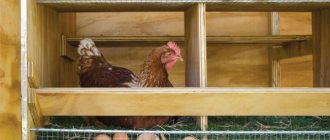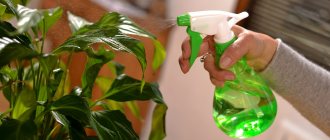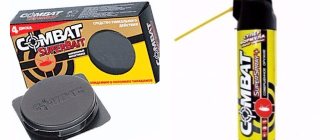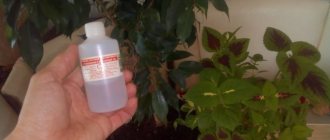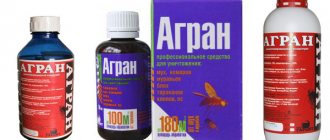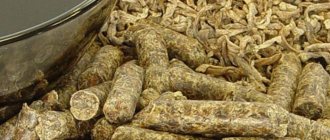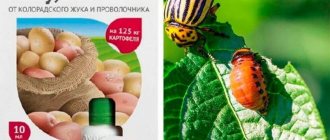Good afternoon, poultry farmers! Today we are debriefing on fermentation bedding for chickens. Bacterial bedding for laying hens is a guarantee of good health and enviable productivity of feathered workers! Especially convenient in winter.
Today, novice poultry farmers, we will talk about the pros and cons, the nuances of using bedding material, which makes life much easier for chicken breeders. They are used in the countryside or in the garden, on private farms, in villages and rural areas.
Perhaps you already guessed that we will talk about bacterial mats (hereinafter referred to as BP). Another name for a popular material is fermentation chicken litter.
Fermentation litter for chickens
Advantages of BP:
- Due to their environmental friendliness, BPs do not harm the health of biological objects;
- there is no need for personal protective equipment (respirator, gloves). It is noteworthy that this also applies to the powdered composition;
- the vital activity of bacteria and enzymatic processes have a positive effect on microclimate parameters, including temperature conditions. Therefore, in winter the costs associated with heating the poultry house are reduced. Moreover, BPs absorb harmful gases, such as NH3;
- BP reduce the risk of infections, rid the chicken coop of the smell of waste products (partially, of course);
- work for a long time. According to some manufacturers, within a few years;
- due to microclimate optimization, they improve meat and egg productivity;
- Any place is suitable for storing power supplies, as they are not a source of unpleasant odor.
Deep bacterial litter for chickens has no significant disadvantages, although it is an expensive pleasure. Also, the practice of experienced poultry farmers shows that fermentation litter for chickens loses its effects after 2-3 months of use. Of course, this is not the correct start-up and care!
There are some contraindications, but we’ll talk about them below.
Operating principle
Fermentation bedding from any manufacturer contains bacteria, the use of which is absolutely harmless to animals, does not cause allergies in humans, and is environmentally safe. The breeding ground for these microorganisms is urine and feces. After processing the excrement, the specific odor of ammonia is eliminated. In addition, when organic products decompose, heat is generated. Inside the bedding layer, the temperature reaches forty to fifty degrees, and on the surface where the animals are located, it is already comfortable - about 20 ° C.
recommended articles:
- How to keep turkeys in winter?
- Winter births in rabbits
In order for bacteria to work, oxygen must enter the litter. Therefore, it is necessary to prevent it from compacting, and if necessary, shake the top layer. As a result of fermentation, the litter, after its service life has expired, can be immediately used as a fertilizer for its intended purpose. This distinguishes it favorably from other litters, which must first burn out and then go to the fields.
Why doesn't fermentation chicken litter work?
Requirements for the design features of the poultry house, conditions for the preparation and use of BP:
- Dry, level and hard floor. BP is more effective on concrete, plastic or stone surfaces;
- positive temperature during cooking. Therefore, if the plans include constant use of the composition, it is better to equip the chicken coop with ventilation in advance, since the material will have to be used in winter. The right solution would be to insulate the room;
- the presence of traditional bedding material, since bacterial compositions refer to additives and nothing more;
- the presence of sawdust in organic matter, without which the microflora does not work. Tip: in the process of selecting waste from the wood processing industry, bet on 3-centimeter sawdust;
- availability of reliable ventilation. The vital activity of microflora is accompanied by the release of heat. Therefore, without ventilation in the room, the relative humidity will increase, condensation will accumulate, and this is the reason for the development of mold fungi, poultry pathologies, including fatal diseases that affect the entire flock;
- periodic change of bacterial material. In this case, you must follow the manufacturer's recommendations. Read the instructions carefully;
- compliance with standard stocking density values - 5 birds/m2. At a lower density, the microflora will not receive enough nutritional substrate - litter. If you overstock the stock, the litter will become compacted and anaerobic conditions will be created in it. And beneficial bacteria need oxygen.
How to properly keep pigs
Bio-litter has certain care requirements. The main thing is air access to all layers of the litter, otherwise the bacteria will die. Pigs do a good job of superficially loosening the litter, but once every couple of weeks it is necessary to mix the shavings with a pitchfork to a greater depth.
During the life of microbes, heat and moisture are released. To maintain a comfortable temperature and humidity in the room, it is necessary to install forced ventilation.
The life cycle of bacteria for a pigsty depends on their type and operating conditions. Old litter absorbs moisture worse, becomes brown in color, and an unpleasant odor appears in the room. This is a signal to clean the pigsty and lay a new layer of sawdust.
Poultry house preparation
Only in a properly prepared chicken coop can one expect the effects declared by the BP manufacturers. Therefore, the structural elements of the room, main and auxiliary equipment are thoroughly washed and disinfected. This should be done before the first frost, in the fall.
Do not use disinfectants that pose a threat to poultry and beneficial microflora. The priority disinfectant is lime.
We need to wait for the house to dry out. Ventilation is useful in this regard.
As noted above, first the traditional version of the bedding - sawdust - is laid. The latter can be replaced with peat. The maximum thickness of the organic substrate layer is 40 cm.
Regardless of the form (powder, liquid, granules), the bacterial composition is distributed evenly over the organic substrate.
It is more convenient to add water to the composition (if required) with a watering can. Remember, only warm water guarantees rapid activation of the BP microflora. Chlorinated water is taboo, as it negatively affects the activity of beneficial bacteria. Whenever possible, use water from a well, stream, or river with a sandy, rocky bottom.
The fermentation litter moistened with water is mixed and loosened. If traditional organic matter is straw, a pitchfork will help. It is easier to dig up sawdust with a shovel. Another approach to launching a liquid version of the litter is to prepare a working solution (water + preparation) and then pour it over the organic substrate.
After a week, the performance of the microflora is checked. If everything is fine, the litter will become warmer. In this case, we can say that the poultry house is ready for occupancy.
Features of keeping piglets
Pigs and piglets are kept on bedding in compliance with the following recommendations:
- if bedding is used, then the design of the pigsty does not require thick walls and ceilings. It is enough to use a lightweight frame with a tent roof;
- concrete floors are excluded. The floor made of compacted soil must have drainage; if it is absent, then the height of the litter must be at least 30 cm;
- first, straw is laid out 30-40 cm in height, and then a biological preparation is sprayed onto it;
- Fermentation permanent litter, even in frosts below minus 30 0C, is capable of releasing heat to the surface from plus 5 degrees, because the fermentation process is accompanied by the active release of heat into the environment. Temperatures in deep layers can reach plus 40 degrees;
- if it is planned to change the number of pigs in the pigsty, then the bedding is changed. It can also be updated after proper turning, but this is often not recommended due to sanitary standards. If the litter is frequently turned over, but not completely changed, this can cause the proliferation of pathogenic bacteria.
In barns with such bedding, pigs can be raised free-range. The plots themselves allow the rearing of piglets from 4 months, adult boars and virgin sows, but are not recommended for newborns. Since born piglets require the sow to be nearby, this type of flooring is not suitable for them either.
Regarding feeding:
- Only loose and granular mixtures are used as feed. In winter, a large amount of fiber is added to the feed - it is fermented by bacteria and produces heat during a chemical reaction;
- feeders and drinking bowls are installed on one side - in this case, the litter will be divided into “living” areas by the animals themselves.
Tips for caring for bacterial litter
The fermentation composition will work more efficiently and last longer if you adhere to the following recommendations.
- Loosen the BP regularly at 3-day intervals (this is not necessary during the first week of operation). Neglecting such an event will cause the death of microflora. Loosening increases the amount of oxygen in the litter. We remind you that BP is represented by aerobes;
- Train your chickens to loosen the litter. To do this, periodically sprinkle grain on it (a little bit);
- even before starting the power supply, create and maintain optimal (60 percent) relative humidity in the chicken coop. This microclimate indicator is controlled using a psychrometer. If the moisture concentration increases above the maximum permissible norm, use superphosphate - sprinkle it on the straw (sawdust). Product consumption – 1 kg/sq.m. Then form a new layer of straw;
- Fermentation litter for chickens, according to the information on the packaging, lasts for several years. In fact, the effectiveness of microflora gradually fades away. Therefore, a reasonable solution would be to periodically refresh the product. The following feeding will be beneficial for bacteria: water + BP (20 g) + sugar (1 kg). Let it sit for two to three hours and pour it onto the loosened litter.
Bottom line
If you want to use innovative technologies in your farmstead, first try them on a small area of your barnyard. And formulate your personal opinion about this method. But in any case, be prepared that this litter will not reduce the amount of manual labor for you.
We invite you to join our Zen channel and group on VKontakte or Odnoklassniki, where new articles are published, as well as news for gardeners and livestock breeders.
Similar articles:
- Technology of singeing a pig with straw
- Manifestation of cannibalism in piglets
- Farrowing pen for sows: selection criteria + making a cage with your own hands
Contraindications
BP does not work well on a wooden surface, as wood and bacteria react chemically.
BP and the means used in the fight against insects and rodents are incompatible things.
The formulations should not be used in conditions of high humidity, excessively large or small flocks, absence of traditional bedding material or its strong compaction.
BPs are not used on dried organic matter (especially in summer).
Classification
There are different types of chicken litter bacteria. They may differ in composition and other characteristics:
- The litter can be thin and deep. The layer depends on the time of year and how often the flooring has to be replaced. There are no permanent beddings.
- According to materials. You can buy bedding material, or you can make it yourself from peat, sawdust, straw or sand.
- By manufacturer. You can purchase a product of domestic or foreign production. There is not much difference in quality.
Important! They may also differ in instructions. This is probably the most important point on which the choice of a particular product depends.
Bacterial litter for chickens Top 6
Netto-Plast . This is Chinese material. It contains lactic acid bacteria and enzymes. Consumption of a product with a 3-year service life is 0.5 kilos per ten square meters. Above the litter, a temperature of 25 degrees is maintained, and in its thickness - 50 degrees. One of the advantages is that it does not need to be diluted with water.
Those who plan to keep poultry on deep litter should pay attention to the composition of the Animal Farm . First, large sawdust is laid, and straw is poured on top. The first raw material accounts for 2/3, the second - 1/3 of the height of the total layer. Next, the composition is sprinkled evenly. A sieve will help with this matter. Consumption – 5 grams per square. The procedure is repeated at 14-day intervals.
A bacterial mat from Hong Kong is available on the market - Biolatic Multi-25 . This is a globally recognized composition. The manufacturer guarantees a 2-3 year service life. For every 10 squares, 1/2 kg of material is consumed. It is pre-diluted with water, but you can do without it.
BioSide is a domestic product that provides a temperature of 20 degrees on the surface and 50 degrees in the thickness of the litter. No water is used. Consumption per 10 sq. m. – 500 g. This is the weight of one package.
Of the German litters, the fermentation composition BioGerm . 1 kg of material is consumed for 10 squares. Pre-diluted with water, service life does not exceed two years.
Fermentation liquid Tatarstan litter “ Emelya ” is also popular. For 7-9 sq.m. 1/2 liter required.
Where to buy and price
AgroBakt litter does not contain hormones, antibiotics or other synthetic substances. Useful components in the product neutralize specific odors, retain heat well and reduce the level of pathogenic bacteria. Packaging 250 g - 1000 rubles (for 3-5 sq. m), packaging 500 g - 1700 rubles (per 7-10 sq. m), packaging 750 g - 2500 rubles (per 13-15 sq. m), packaging 1000 g - 3000 rubles (for 17-20 sq. m).
"Animal Farm" eliminates the smell of urea and manure, breaks down organic waste, and creates thermal insulation. Cost 1,985 rub.
“Biomedkhim” - 900 rubles. It has adsorbing, heat-producing and disinfection properties.
Bacteria in a chicken coop are a complex of living bacteriophages, enzymes and organic compounds that can solve a lot of problems in poultry breeding and make the final product of high quality. The farmer must decide whether or not to choose this type of bedding depending on the number of birds he keeps, the size of the birds’ home, the regional climate, and financial capabilities.
